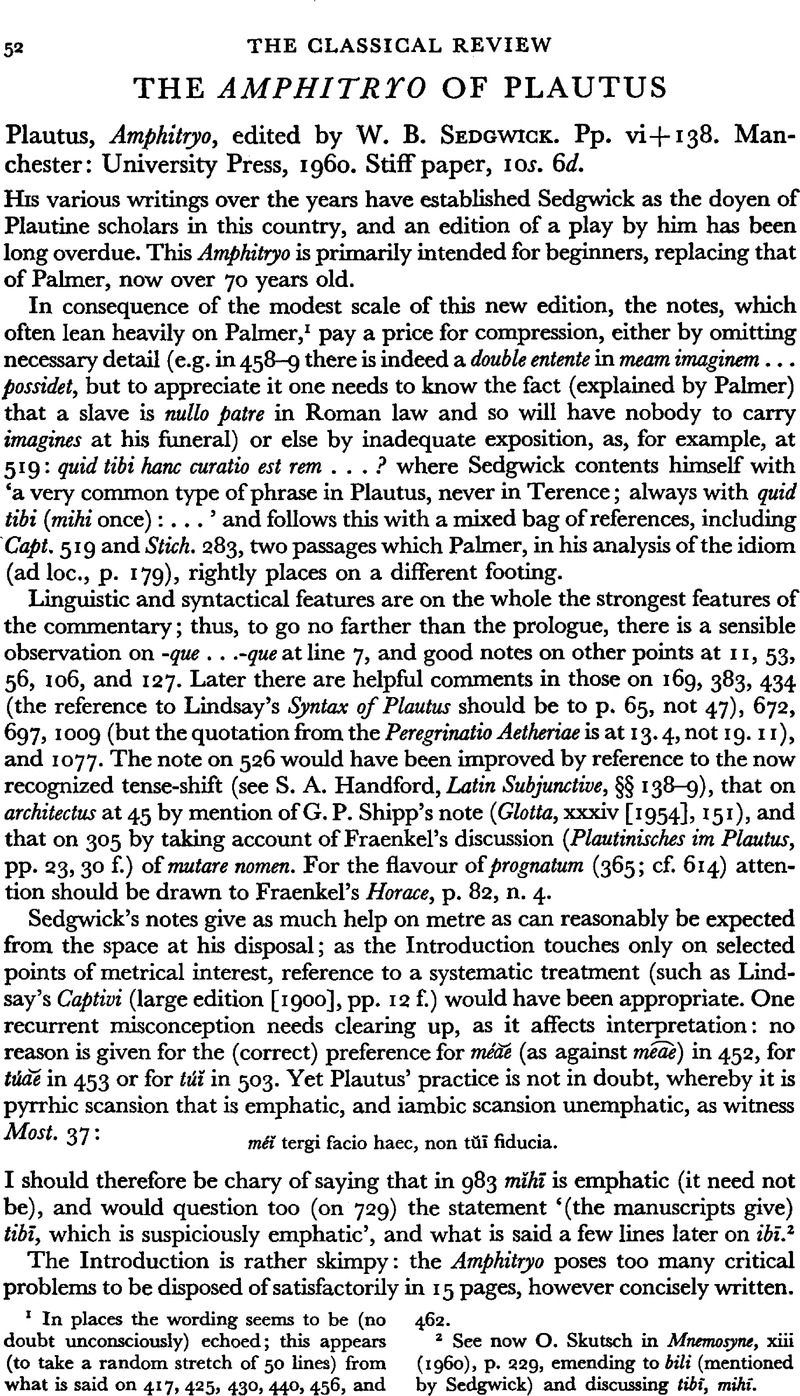No CrossRef data available.
Published online by Cambridge University Press: 27 February 2009

page 52 note 1 In places the wording seems to be (no doubt unconsciously) echoed; this appears (to take a random stretch of 50 lines) from what is said on 417, 425, 430, 440, 456, and 462.
page 52 note 2 See now Skutsch, O. in Mnemosyne, xiii (1960), p. 229CrossRefGoogle Scholar, emending to bili (mentioned by Sedgwick) and discussing tibï, mihï.
page 53 note 1 Curiously the recurrence of the phrase conalusos (–um) geris (Amph. 341 and Rud. 1144), for what it is worth, has escaped Marx, and Kellermann, (Comm. Jenenses vii. 1 (1903), pp. 130 f.Google Scholar).
page 53 note 2 In spite of the similarity of wording in Livy xxvii. 51, 10, I cannot accept Enk's date of 207, after the battle of the Metaurus River; surely lines 188–9 imply a date after 202?
page 53 note 3 It is said that these Rhinthonica were ‘after-plays’ (⋯ξοδ⋯α); this must rest on a doubtful emendation of the puzzling ⋯ξωτικ⋯ in Johannes Lydus de Mag. 1. 40 (p. 41 Wünsch). For what his evidence is worth he mentions Rhinthonica after Atellana and before ‘tabernariae’ and ‘planipedariae’, which suggests scanty literary pretensions.
page 53 note 4 Last done by Bergk, T. in his Griech. Lit. iv (1887), 123.Google Scholar
page 53 note 5 In Cratinus' Nemesis both Zeus and Nemesis seem to have come on the stage, and this should be recorded in note 2 on p. 3; the mythological burlesque in that play had, we are told, a satirical purpose, directed against Pericles and Aspasia.
page 53 note 6 Rh. Mus. xvi (1861), 472 f.Google Scholar (= Ges. Schriften, i. 440).